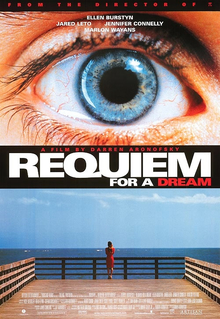| English: A view of the Centers for Disease Control and Prevention. (Photo credit: Wikipedia) |
So many dreams, so many requiems…
This week there was grim news being reported by the Centers for Disease Control (CDC). For sure the headlines are exploding with news about the Ebola virus and Enterovirus D68, but on October 2, 2014, another item caught our attention.
Here is the CDC’s headline: Heroin overdose deaths increased in many states through 2012. This report was part of their October 3, 2014 Morbidity and Mortality Weekly Report (MMWR).
Increases in Heroin Overdose Deaths – 28 States, 2010 to 2012
While there were many authors/researchers involved in this research, the corresponding author is Len J. Paulozzi, M.D. who works for the Division of Unintentional Injury Prevention, National Center for Injury Prevention and Control, CDC. This study began in February 2014 when state health departments were invited to submit data from their mortality files from 2008-2012. You can read the report here or download and print a PDF copy of the full report here.
Study’s parameters
- 28 states participated in the study
- The 28 states sampled represent more than half (56%) of the United States population
- These states account for more than one-half of the country’s drug overdose deaths
- Examined death certificates with death resulting from heroin overdose from 2012 and compared these rates from 2010
Study’s findings as reported in the CDC’s press release
- From 2010-2012, the overall heroin death rate across the 28 states doubled.
- The sharp heroin overdose increase extends the trend observed in the 2011 national mortality data.
- Five states had increases in prescription opioid death rates, seven states had decreases, and sixteen states had no change.
- Of the 18 states with reliable heroin overdose death rates examined individually in this study, 15 had statistically significant increases in heroin death rates.
- No state had a decrease in the heroin death rate.
- The increases in state heroin death rates from 2010-2012 were associated with increases in prescription opioid death rates.
Actual numbers may be even more insightful: The death rate doubled to a rate of 2.1 deaths per 100,000, which accounted for an increase to 3,665 in 2012 deaths up from 1,779 in 2010. There were increases in both men and women, in every age group, and among whites, Hispanics and blacks.
According to the CDC’s report:
Though not directly addressed by this study, two things appear to be driving the increase in heroin overdoses: (1) widespread prescription opioid exposure and increasing rates of opioid addiction; and (2) increased heroin supply. While the majority of prescription opioid users do not become heroin users, previous research found that approximately 3 out of 4 new heroin users report having abused prescription opioids prior to using heroin. This relationship between prescription opioid abuse and heroin is not surprising; heroin is an opioid, and both drugs act on the same receptors in the brain to produce similar effects. Heroin often costs less than prescription opioids and is increasingly available.
Some final thoughts…
Actually, Dr. Paulozzi offered to the Associated Press when asked about the future – “It’s a volatile situation.” This we know for sure, everyday more families are impacted by heroin addiction. Most parents have the same reaction of disbelief, unimaginable that their son or daughter would even think of trying heroin. We’ve talked about the unsupervised medicine cabinets; we’ve written about celebrities dying from heroin overdoses, like Philip Seymour Hoffman and Cory Monteith. Each of these posts focused in on the heroin epidemic. And still, the families are always surprised…it just can’t be real.
| Requiem for a Dream (Photo credit: Wikipedia) |
Today we thought back to 2000 when Darren Aronofsky directed the stellar cast of Ellen Burstyn, Jared Leto, Jennifer Connelly and Marlon Wayens in Requiem for a Dream. The words of critic Roger Ebert still come to mind:
What is fascinating about “Requiem for a Dream,” the new film by Darren Aronofsky, is how well he portrays the mental states of his addicts. When they use, a window opens briefly into a world where everything is right. Then it slides shut, and life reduces itself to a search for the money and drugs to open it again. Nothing else is remotely as interesting…The movie was given the worthless NC-17 rating by the MPAA; rejecting it, Artisan Entertainment is asking theaters to enforce an adults-only policy. I can think of an exception: Anyone under 17 who is thinking of experimenting with drugs might want to see this movie, which plays like a travelogue of hell.
At Cottonwood Tucson, the treatment of opiate addiction usually starts with medically-managed detoxification. Our doctors prescribe medications that help the patient safely negotiate the opiate withdrawal process. Our counseling staff then focuses on helping the opiate addicted patient find more adaptive ways of managing emotional pain, anxiety and an often-present sense of boredom, restlessness and dis-ease. Mind/body therapies can help our opiate addicted patients become more aware of how and where in their body they carry these feelings.
It is also sometimes necessary to address issues relating to the addict identity and lifestyle. Addictions to substances like opiates and prescription drugs often exist in tandem with co-occurring mood disorders like anxiety and depression, or with other addictions.














